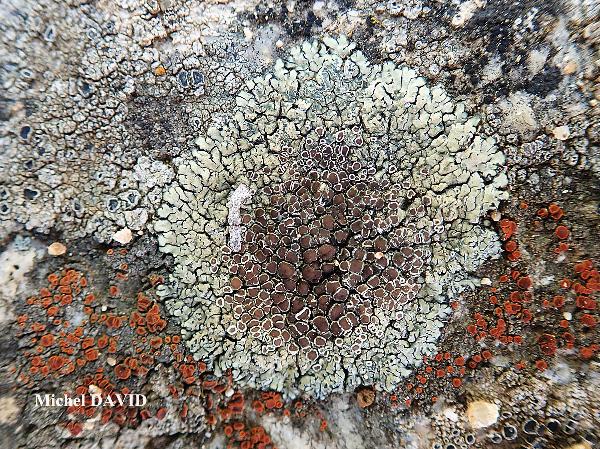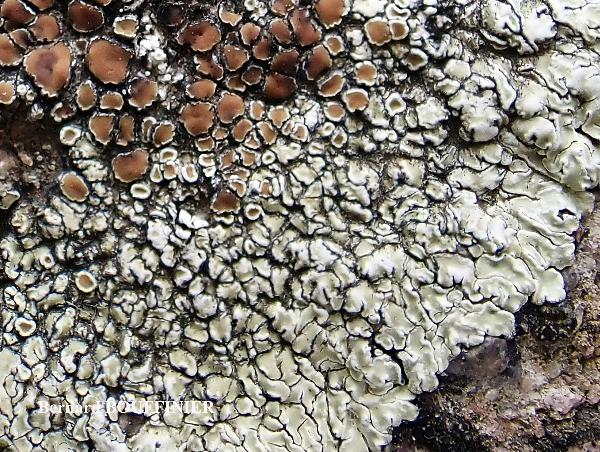Protoparmeliopsis muralis var. diffracta (Ach.) M. Choisy ex Werner
Cavanillesia, 5: 169, 1932. Basionym: Lichen diffractus Ach. - Lich. Suec. Prodr.: 63, 1799.
Synonyms:
Distribution:
Description: Thallus crustose-placodioid, episubstratic, yellowish green to grey-green, weakly areolate in the center, distinctly lobed at margins, forming orbicular to irregular, up to 10 cm wide rosettes. Central areoles angular, black-rimmed, the black hypothallus often visible between them; lobes 0.5-1(-1.8) mm wide, concave to flat, contiguous, not separated by thin white lines, often black-rimmed, slightly diverging only at thallus margins, smooth and wax-like, epruinose; lower surface corticate, dull whitish to pale brown. Upper cortex inspersed with yellowish granules soluble in K and insoluble in N, overlain by an epinecral layer; medulla white, rather loose; lower cortex poorly developed, mostly confined to the tips or margins of lobes. Apothecia usually numerous and crowded, masking the surface in thallus center, lecanorine, 0.4-1.5 mm across, sessile, with a flat, pale brown disc and a smooth to minutely crenulate, epruinose, persistent thalline margin. Thalline exciple corticate, paraplectenchymatous; proper exciple thin, prosoplectenchymatous; epithecium colourless to pale yellow-brown; hymenium colourless, 50-80 µm high, I+ blue; paraphyses coherent. 2-3 µm thick, mainly simple, the apical cells only slightly swollen; hypothecium colourless to yellowish. Asci 8-spored, elongate-clavate, very thin-walled, with a K/I+ blue, tall tholus penetrated by a faintly amyloid apical cushion, the wall K/I-, surrounded by a K/I+ blue outer layer, Lecanora-type. Ascospores 1-celled, hyaline, ellipsoid, 9-15 x 4.5-7 µm. Spot tests: thallus K- or K+ very pale yellow, C-, KC+ pale yellow, P-. Chemistry: unknown, but cortex most probably with usnic acid.Note: a very much misunderstood silicicolous taxon which needs further study, often treated as a synonym of P. bolcana, mainly differing in the smaller, sessile apothecia crowded in thallus center. The species has been reported from Italy by various authors in the XIX
Century, but all of these records are unreliable due to possible confusion with P. bolcana. Records of the latter species from high altitudes in the Alps likely refer to this taxon.
Growth form: Crustose placodiomorph
Substrata: rocks
Photobiont: green algae other than Trentepohlia
Reproductive strategy: mainly sexual
Poorly known taxon in need of further study

Predictive model
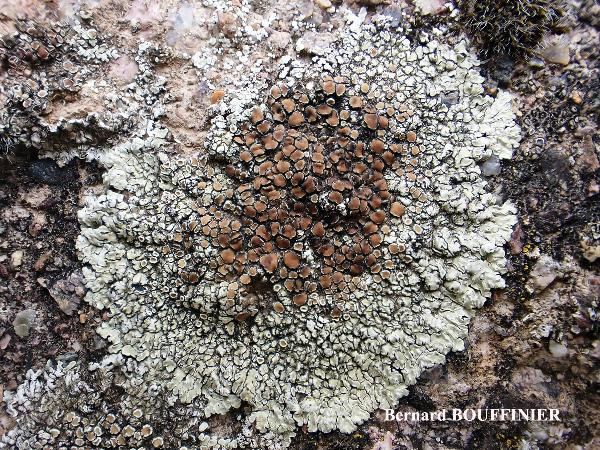
Bernard Bouffinier - Source: https://www.lichensmaritimes.org/index.php?task=fiche&lichen=1447&lang=en
France, Corse
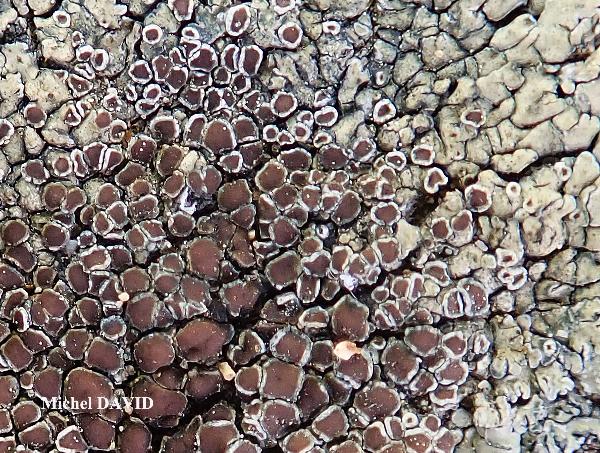
Michel DAvid - Source: https://www.lichensmaritimes.org/index.php?task=fiche&lichen=1447&lang=en
France, Corse, Monticello
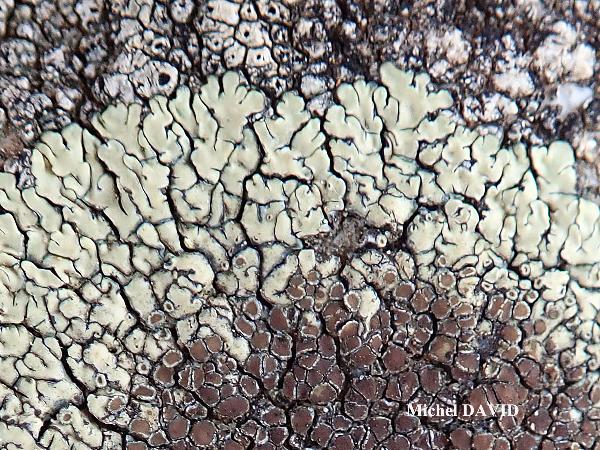
Michel DAvid - Source: https://www.lichensmaritimes.org/index.php?task=fiche&lichen=1447&lang=en
France, Corse, Monticello
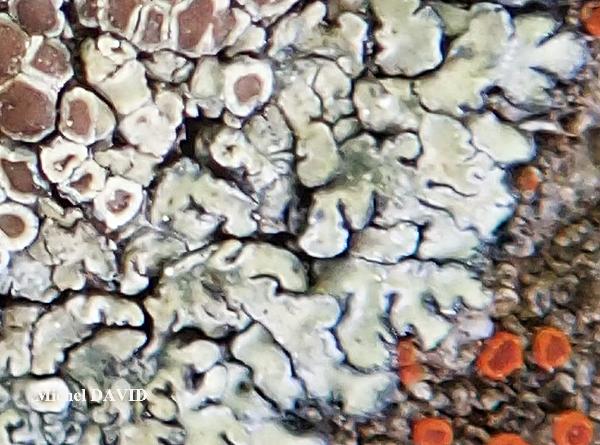
Michel DAvid - Source: https://www.lichensmaritimes.org/index.php?task=fiche&lichen=1447&lang=en
France, Corse, Monticello
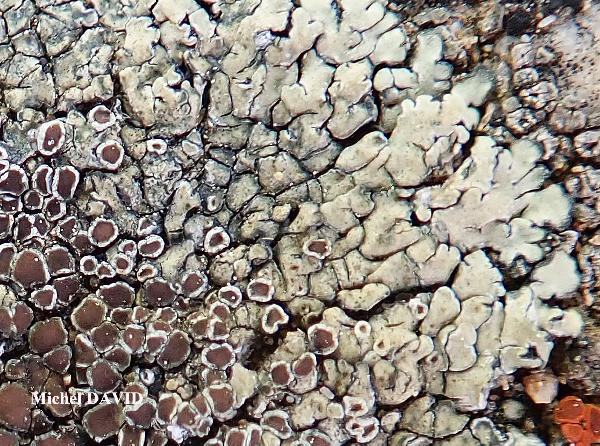
Michel DAvid - Source: https://www.lichensmaritimes.org/index.php?task=fiche&lichen=1447&lang=en
France, Corse, Monticello
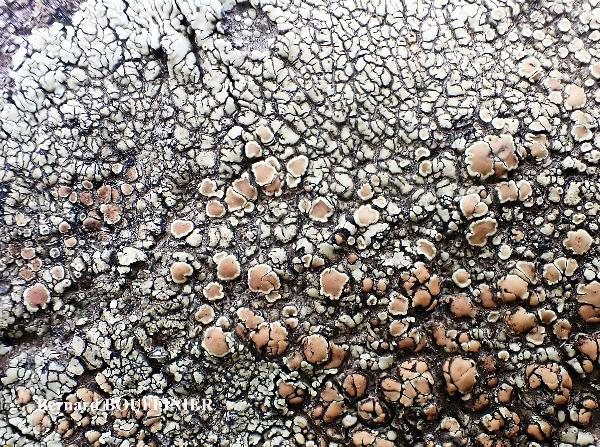
Bernard Bouffinier - Source: https://www.lichensmaritimes.org/index.php?task=fiche&lichen=1447&lang=en
France, Corse
Growth form: Crustose placodiomorph
Substrata: rocks
Photobiont: green algae other than Trentepohlia
Reproductive strategy: mainly sexual
Poorly known taxon in need of further study

Predictive model

Bernard Bouffinier - Source: https://www.lichensmaritimes.org/index.php?task=fiche&lichen=1447&lang=en
France, Corse

Michel DAvid - Source: https://www.lichensmaritimes.org/index.php?task=fiche&lichen=1447&lang=en
France, Corse, Monticello

Michel DAvid - Source: https://www.lichensmaritimes.org/index.php?task=fiche&lichen=1447&lang=en
France, Corse, Monticello

Michel DAvid - Source: https://www.lichensmaritimes.org/index.php?task=fiche&lichen=1447&lang=en
France, Corse, Monticello

Michel DAvid - Source: https://www.lichensmaritimes.org/index.php?task=fiche&lichen=1447&lang=en
France, Corse, Monticello

